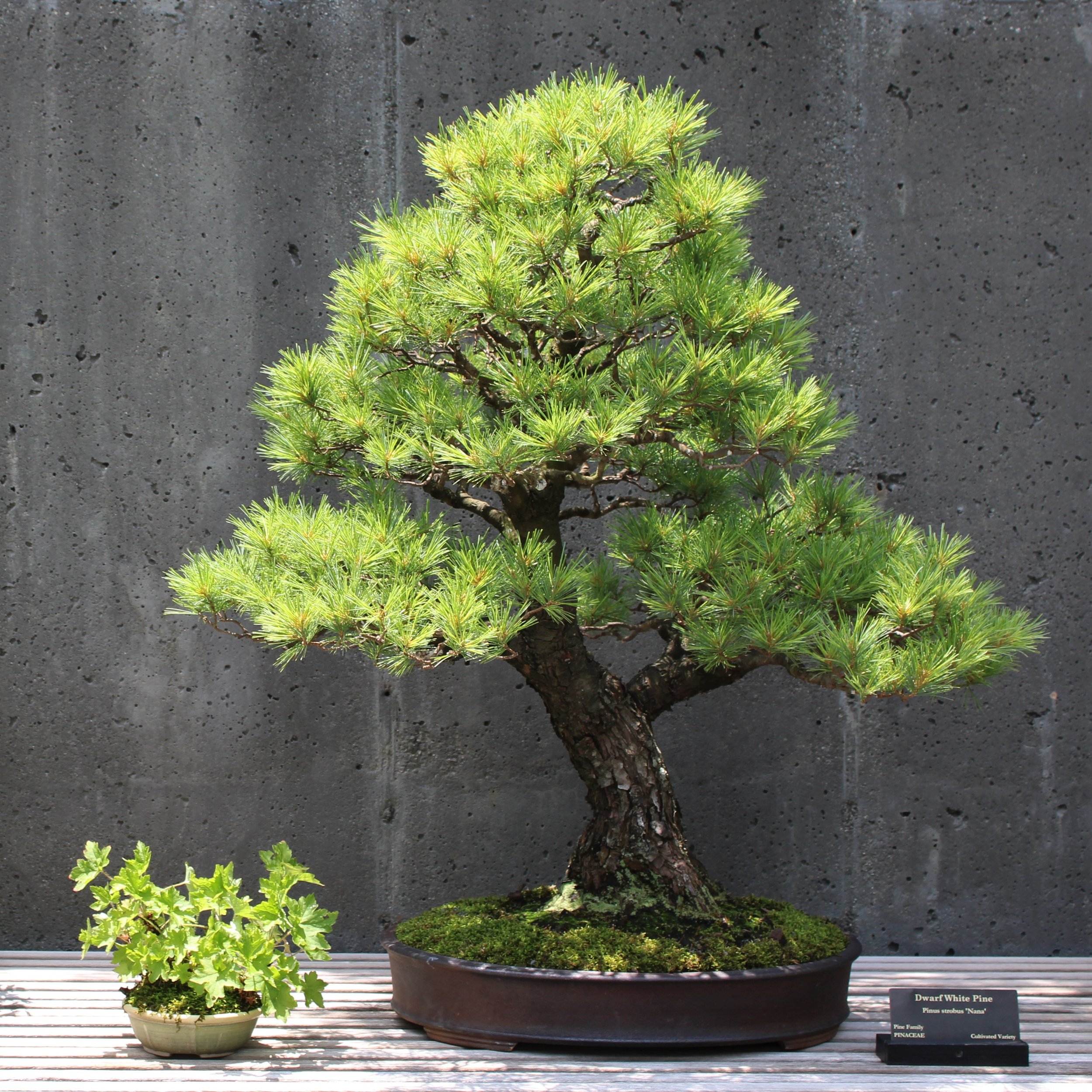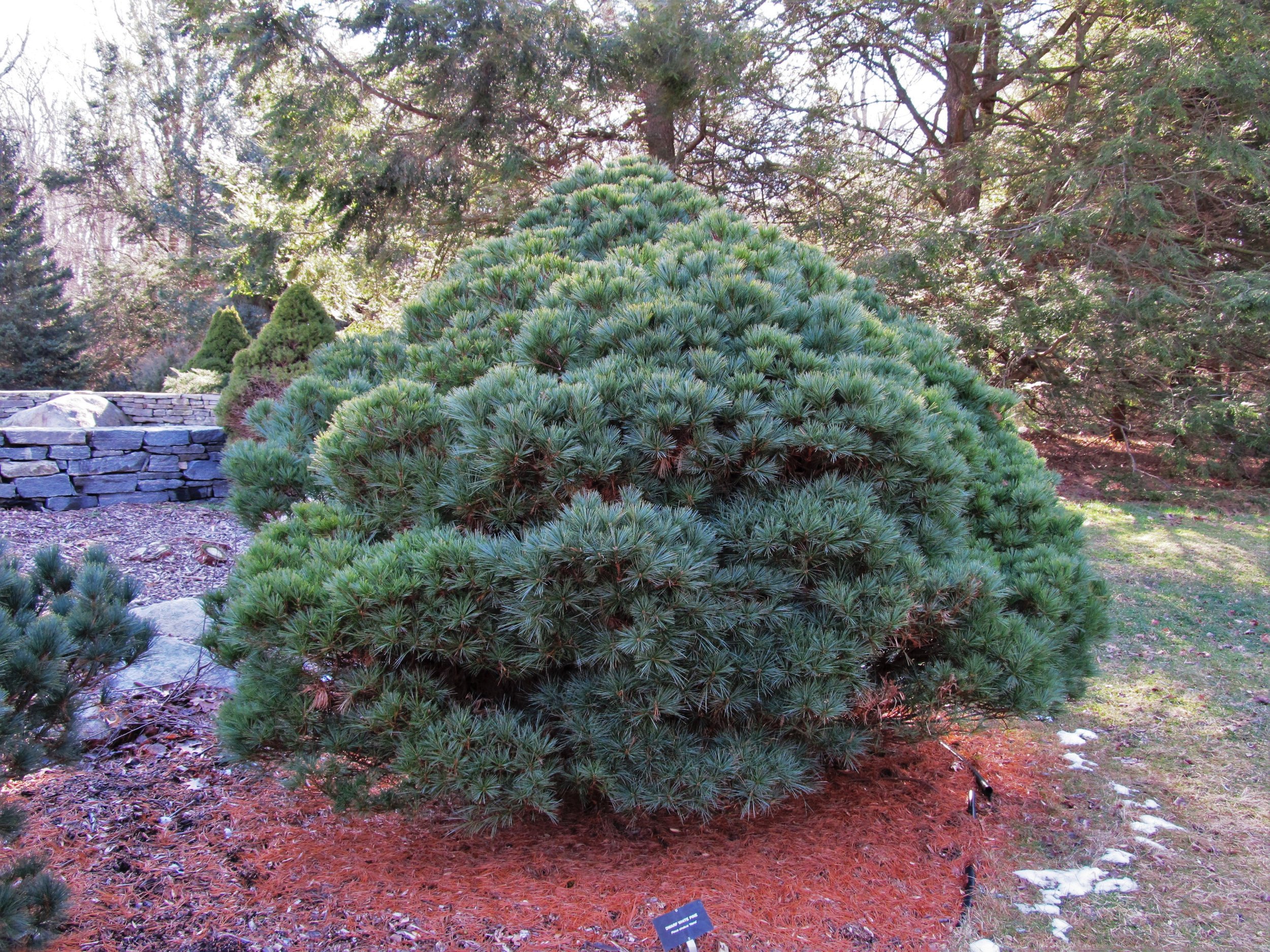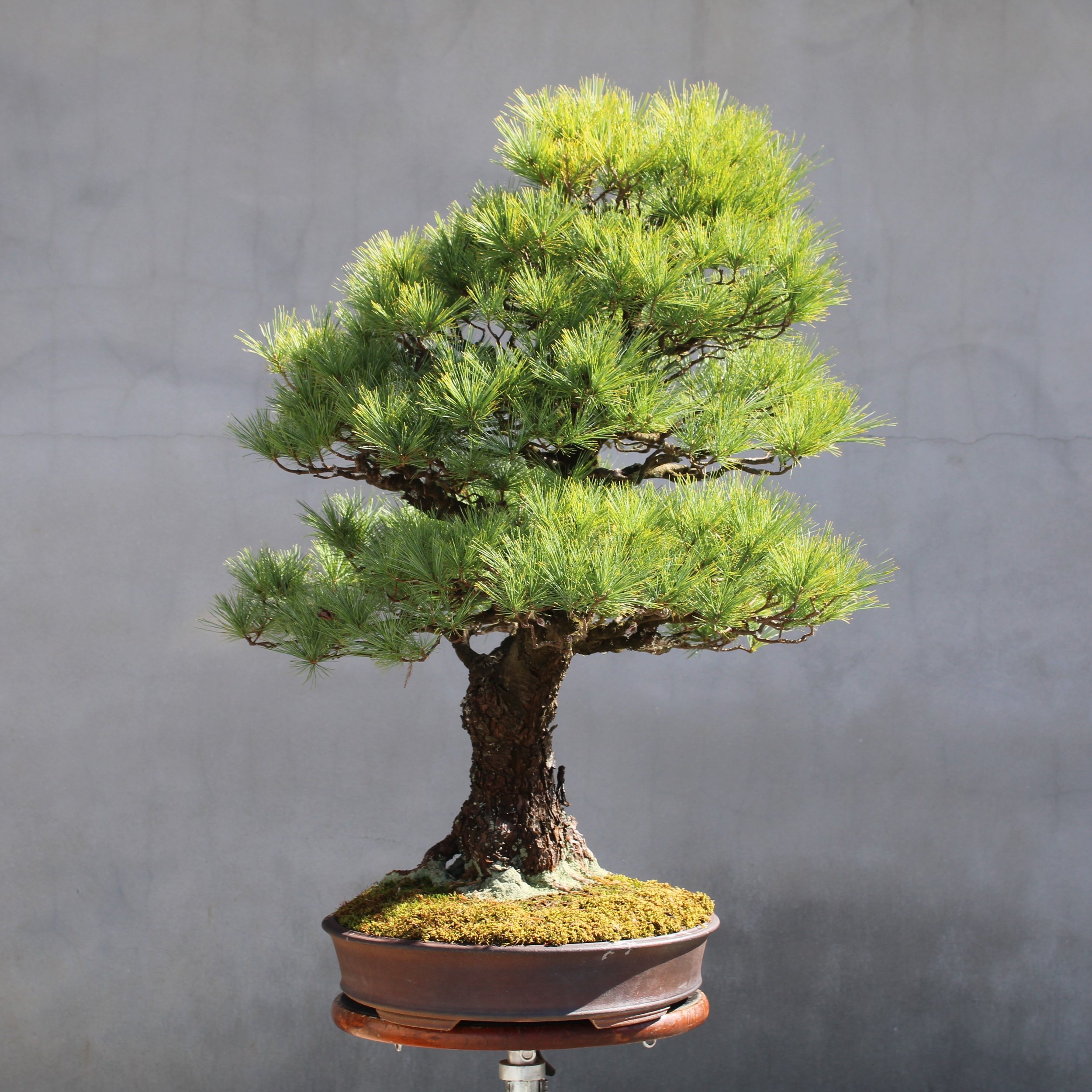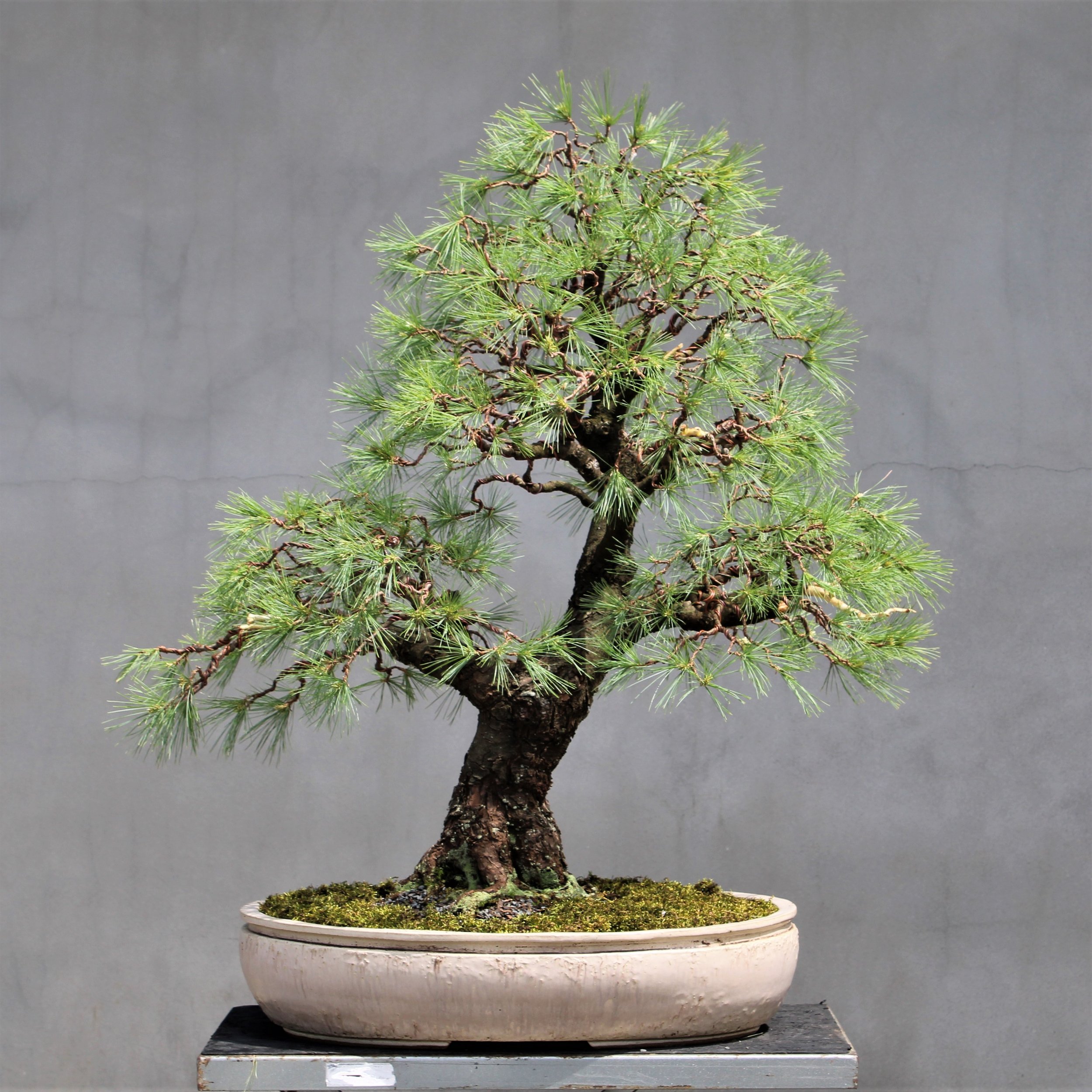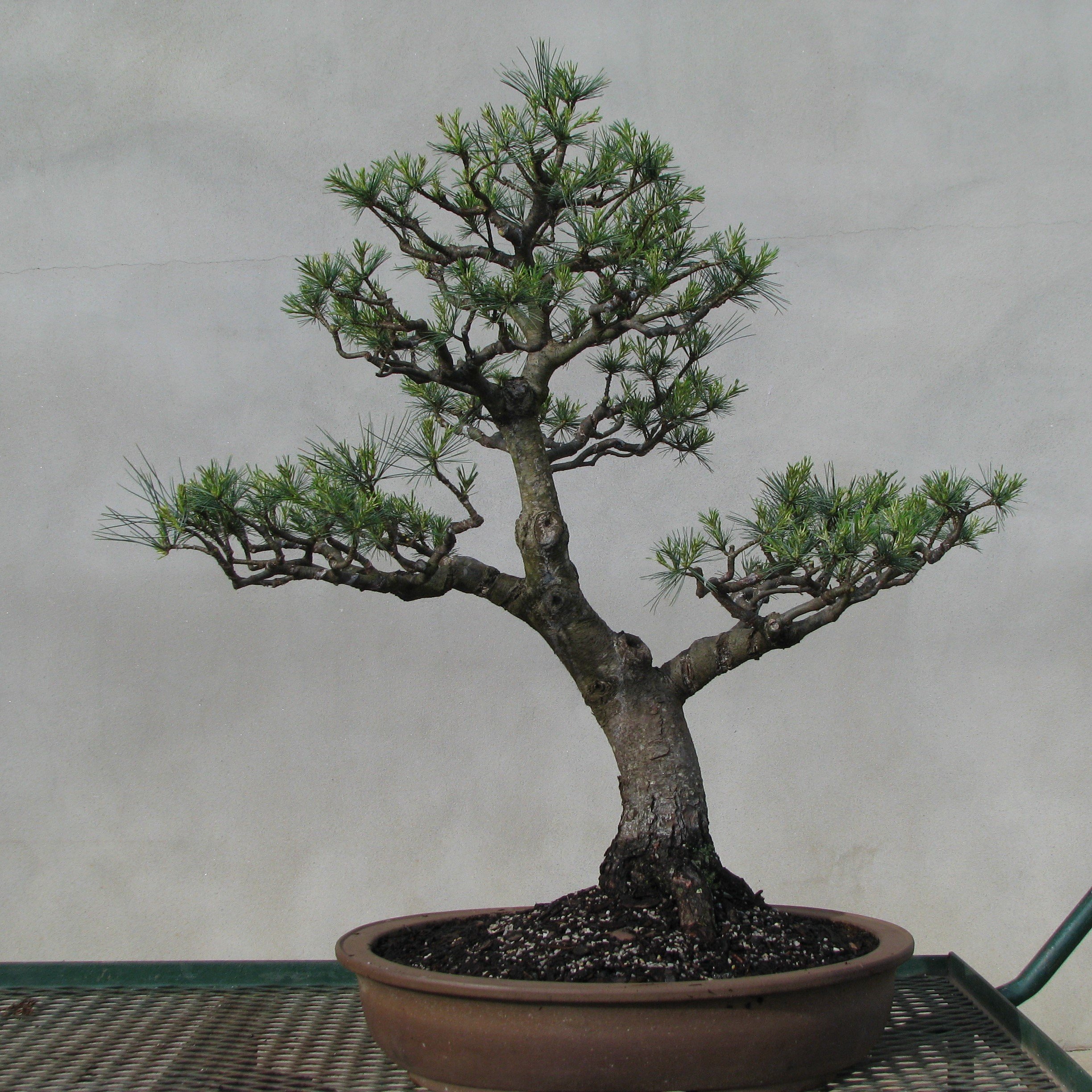Heterogeneous Dwarf Eastern White Pine
The Arboretum has never purchased a bonsai for our collection; all of our specimens either came to us as donations or were produced in-house. Those in the latter category I think of as homegrown.
One of our homegrown bonsai is this Dwarf Eastern White Pine (Pinus strobus 'Nana'), shown on display in the bonsai garden in 2022:
This specimen started its bonsai career as a rooted cutting, purchased from a mail order nursery in 1994. The tree was only a year or two old then and not more than twelve inches in height, so it was immediately planted in the ground and allowed to grow in order to increase its size. Starting a bonsai from such young plant material is always a long shot. Not only can it be expected to take years to build a trunk and branch structure, but so much can go wrong along the way. That’s part of the reason why there is no photo-documentation of this tree's early life — I was busy with many other better developed trees and there was no reason to expect the little pine to amount to anything.
The very first image made of the dwarf white pine was in March of 2008:
By the time of this photograph we had been developing the tree for fourteen years, and approximately five of those years it spent growing in the ground. All I can recall about that early phase of the pine's life is that the tree stayed compact but grew densely, which is typical of dwarf cultivars. But the trunk put on girth in a way that was not so typical and it attracted my attention.
It is worth taking a moment to consider the nature of dwarf varieties of standard sized trees. It might be imagined that all dwarf plants stay small, and they do, but small is a relative term. A straight species eastern white pine (meaning an ordinary member of its kind, as would grow from any random white pine seed) is capable of reaching heights over one hundred and fifty-feet tall, making it one of the tallest tree species in Eastern North America. The spread of an eastern white pine is variable depending on circumstances, but it almost always grows much taller than it does wide. Pinus strobus ‘Nana,’ on the other hand, is capable of attaining over seven feet in height and ten feet in width. A full grown dwarf white pine is a sizable plant overall, much bigger than a person, but much smaller than a full-grown straight species white pine. Additionally, while the eastern white pine is considered a fast-growing tree, the dwarf form of it is not, although our bonsai specimen seems to be fairly vigorous. Most bonsai people avoid working with eastern white pine because it has long needles (typically between two and five inches in length) and tends to produce long internodes (the stretch of stem between points where foliage emerges). Dwarf eastern white pine answers those complaints. In our experience, Pinus strobus ‘Nana’ is completely suitable for bonsai use.
Eastern White Pine (Pinus strobus)
Dwarf Eastern White Pine (Pinus strobus ‘Nana’)
Like many of the earlier homegrown bonsai in the Arboretum's collection, our dwarf white pine exhibits a conventional primary branch arrangement. That is to say the basic structural layout of this specimen conforms to the way bonsai trees are supposed to be designed, according to the way bonsai is generally taught. I was taught in the conventional manner and adhered closely to standard classical bonsai design theory, at least in the earlier years of my career. The bonsai I designed then all followed the so-called rules. Subsequently, I have chosen to alter the design of certain homegrown specimens from those early days, as my ideas about bonsai have evolved. This is an outgrowth of a desire to make bonsai that do not look so much like the common conception of what bonsai trees are supposed to look like. Achieving makeovers of this sort takes time and can set a bonsai back in development by years.
In the case of this dwarf white pine, I decided it was not worth undoing what had been accomplished because I could not think of a better tree to make out of what already existed. If this bonsai were a maple or hornbeam, it could be pruned back hard to nothing much more than a trunk and a new design could be constructed from the resulting regrowth. Pines are different. The grower does not have the same latitude to alter an established pine so dramatically without risk of unacceptable damage, and pines grow back slowly. However, I found there are ways to work within the existing primary branch structure of a bonsai to loosen it up and give it a more wild feeling, which might also be referred to as a more naturalistic feeling. That is how this pine has been handled the last few years. The primary branch arrangement remains Neoclassical in character, giving the tree a more traditional surface appearance, but what those branches do once they depart from the trunk is something else altogether. It might be said that the result is a sort of hybrid style between Neoclassical and naturalistic.
2011
2013
2015
2016
2019
2021 - Although an evergreen, eastern white pine exhibits autumn coloration as older needles go through leaf senescence.
I would not set out to design a bonsai that was partly Neoclassical and partly naturalistic if I was starting from scratch, because I'd rather have a little tree that looked completely naturalistic. However, if that option is off the table I will take a heterogeneous style over a completely Neoclassical design. The Arboretum's collection intends to be naturalistic in its identity. If we can't get all the way there, we'll get as close as we can.
The following images document an extensive overhaul of the dwarf eastern white pine bonsai accomplished this spring. It is the same process followed every time we do the pruning and wiring on this specimen in advance of a new growing season.
These first four photos show an in the round look at the bonsai prior to springtime work being done. Note the fullness of the foliage. Note, too, the cramped appearance of the container in relation to the overall size of the tree. The brown oval pot was made by Ron Lang and is a good piece of work, but after ten years it seems the pine has outgrown it (click on any image to see larger view):
The first step is a thorough pruning to chase back excessive growth and generally open up the foliage mass.
Arboretum bonsai volunteer Rebecca Ayres patiently applies copper training wire to every branch on the tree. The full wiring of a bonsai this size can take more than ten hours.
The next sequence of four photos shows the dwarf eastern white pine after pruning, wiring, shaping and repotting into a new container. The large white oval container was custom designed for this specimen by Robert Wallace, a fine bonsai potter from just over the mountain in Columbus, North Carolina (click on any image for larger view):
Trained to be wild.

